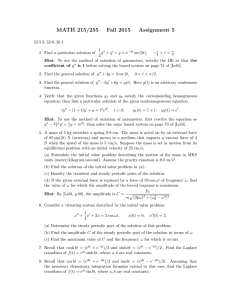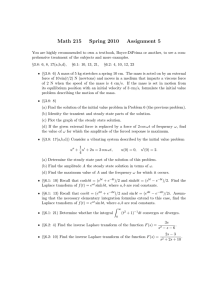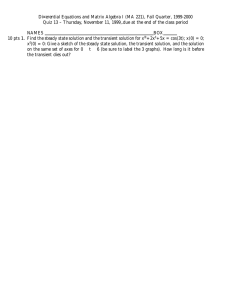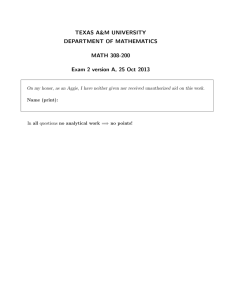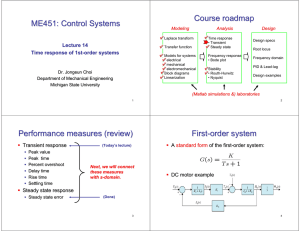MATH 215/255 Fall 2015 Assignment 5
advertisement
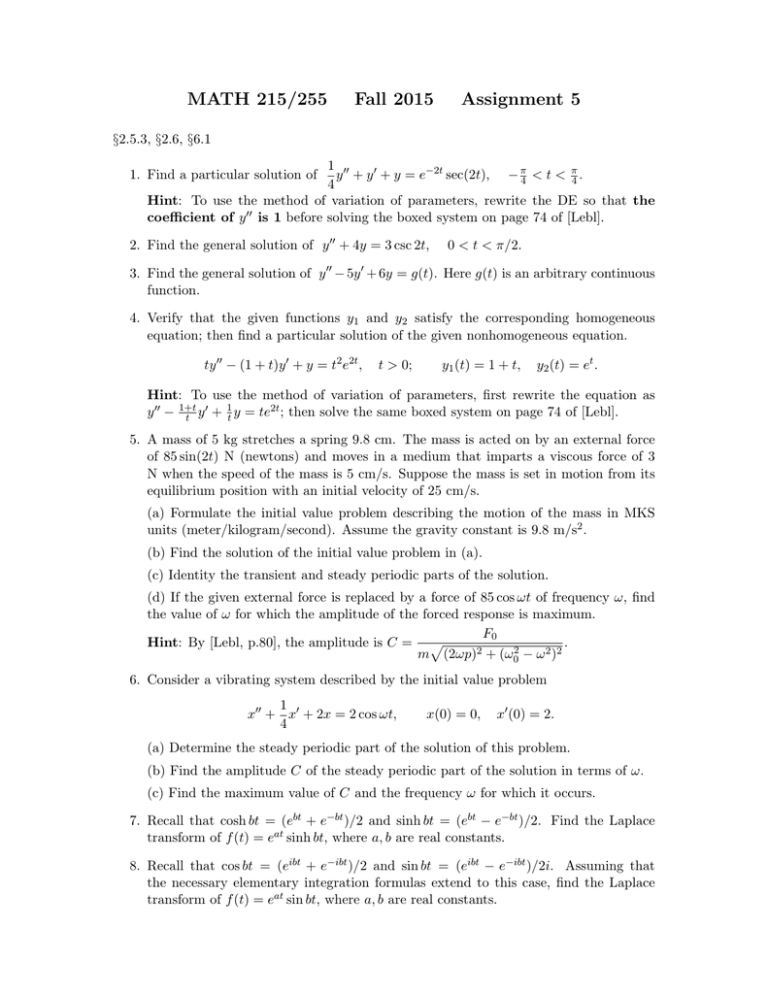
MATH 215/255 Fall 2015 Assignment 5 §2.5.3, §2.6, §6.1 1 00 y + y 0 + y = e−2t sec(2t), − π4 < t < π4 . 4 Hint: To use the method of variation of parameters, rewrite the DE so that the coefficient of y 00 is 1 before solving the boxed system on page 74 of [Lebl]. 1. Find a particular solution of 2. Find the general solution of y 00 + 4y = 3 csc 2t, 0 < t < π/2. 3. Find the general solution of y 00 − 5y 0 + 6y = g(t). Here g(t) is an arbitrary continuous function. 4. Verify that the given functions y1 and y2 satisfy the corresponding homogeneous equation; then find a particular solution of the given nonhomogeneous equation. ty 00 − (1 + t)y 0 + y = t2 e2t , t > 0; y1 (t) = 1 + t, y2 (t) = et . Hint: To use the method of variation of parameters, first rewrite the equation as 1 0 2t y 00 − 1+t t y + t y = te ; then solve the same boxed system on page 74 of [Lebl]. 5. A mass of 5 kg stretches a spring 9.8 cm. The mass is acted on by an external force of 85 sin(2t) N (newtons) and moves in a medium that imparts a viscous force of 3 N when the speed of the mass is 5 cm/s. Suppose the mass is set in motion from its equilibrium position with an initial velocity of 25 cm/s. (a) Formulate the initial value problem describing the motion of the mass in MKS units (meter/kilogram/second). Assume the gravity constant is 9.8 m/s2 . (b) Find the solution of the initial value problem in (a). (c) Identity the transient and steady periodic parts of the solution. (d) If the given external force is replaced by a force of 85 cos ωt of frequency ω, find the value of ω for which the amplitude of the forced response is maximum. F0 . Hint: By [Lebl, p.80], the amplitude is C = p 2 m (2ωp) + (ω02 − ω 2 )2 6. Consider a vibrating system described by the initial value problem 1 x00 + x0 + 2x = 2 cos ωt, 4 x(0) = 0, x0 (0) = 2. (a) Determine the steady periodic part of the solution of this problem. (b) Find the amplitude C of the steady periodic part of the solution in terms of ω. (c) Find the maximum value of C and the frequency ω for which it occurs. 7. Recall that cosh bt = (ebt + e−bt )/2 and sinh bt = (ebt − e−bt )/2. Find the Laplace transform of f (t) = eat sinh bt, where a, b are real constants. 8. Recall that cos bt = (eibt + e−ibt )/2 and sin bt = (eibt − e−ibt )/2i. Assuming that the necessary elementary integration formulas extend to this case, find the Laplace transform of f (t) = eat sin bt, where a, b are real constants. Z 9. Determine whether the integral ∞ (t2 + 1)−1 dt converges or diverges. 0 10. Determine the range of real s so that the integral converges: Z ∞ 2t Z ∞ 2t e e e−st dt (a) e−st dt (b) 2 1 + t 1 + t 0 0 2
